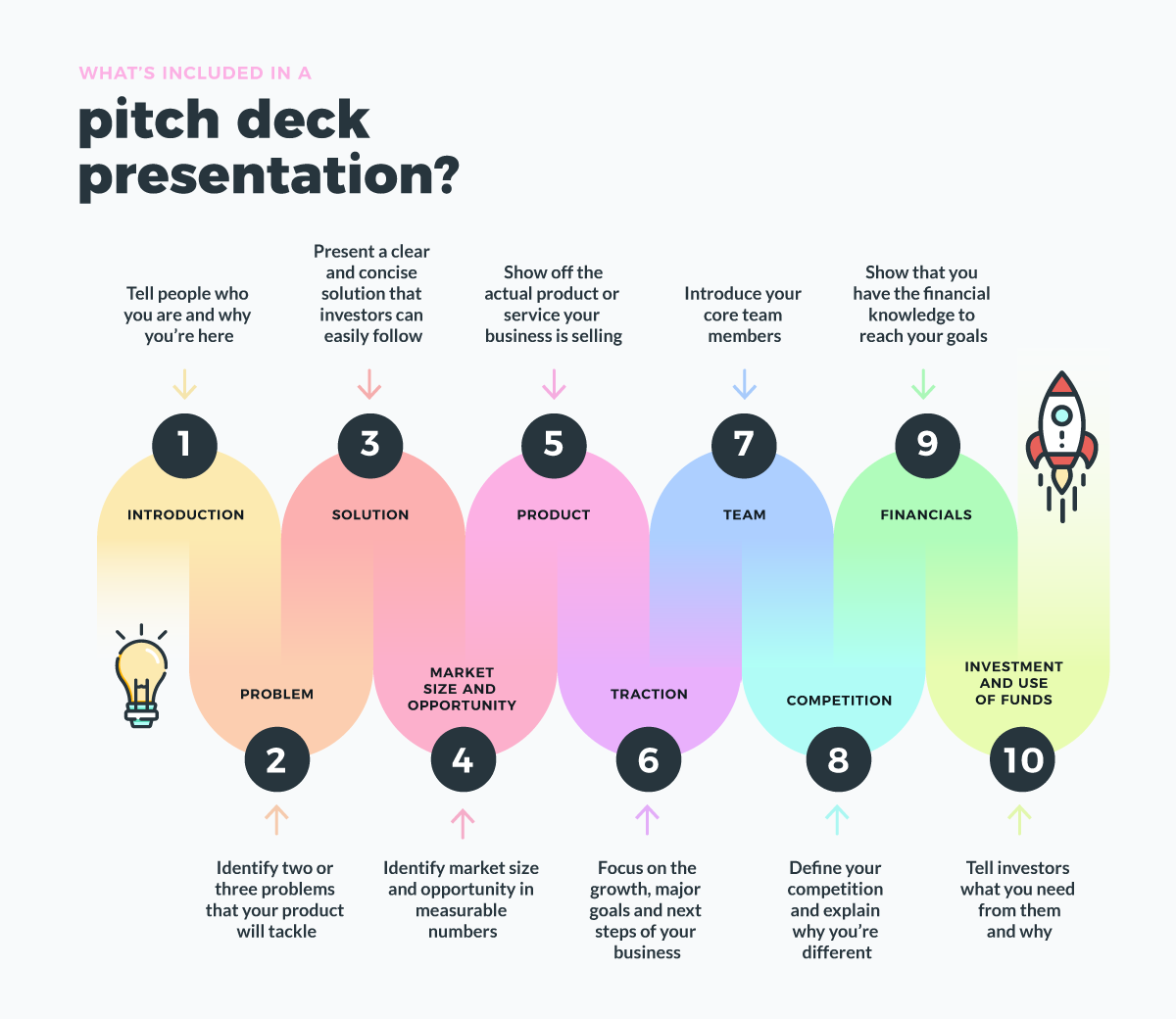Pitch Deck
Pitch Deck
What is a Pitch Deck
Definition:
A pitch deck is a concise and visually compelling presentation used by entrepreneurs and startup founders to convey their business ideas, value propositions, market opportunities, and investment potential to potential investors, venture capitalists, and stakeholders. It serves as a persuasive tool to secure funding, partnerships, and support for the growth and development of the business.
Purpose:
- Capturing Attention: A pitch deck aims to capture the attention of investors within a brief timeframe, typically during an initial meeting or presentation, by highlighting the most compelling aspects of the business idea and its potential for success.
- Communicating Value Proposition: The pitch deck communicates the unique value proposition of the business, outlining the problem it addresses, the solution it offers, and the competitive advantages that differentiate it from existing solutions in the market.
- Showcasing Market Opportunity: It provides an overview of the target market, customer demographics, market size, trends, and growth projections, demonstrating the attractiveness of the opportunity and the scalability of the business model.
- Presenting Financial Projections: The pitch deck includes financial projections, revenue models, key performance indicators (KPIs), and milestones to illustrate the business’s growth trajectory, revenue potential, and return on investment for prospective investors.
Key Components of a Pitch Deck:
- Introduction: A brief introduction that captures the audience’s attention, establishes credibility, and sets the tone for the presentation.
- Problem Statement: Clearly articulate the problem or pain point faced by the target market, highlighting the need for a solution and the opportunity it presents.
- Solution: Describe the product or service offered by the business and how it addresses the identified problem more effectively or innovatively than existing solutions.
- Market Opportunity: Provide an overview of the target market, including its size, growth potential, competitive landscape, and trends shaping the industry.
- Business Model: Outline the revenue model, pricing strategy, customer acquisition channels, and distribution channels that drive the business’s profitability and sustainability.
- Traction and Milestones: Showcase key achievements, milestones, partnerships, customer testimonials, and validation received to date, demonstrating progress and momentum.
- Financial Projections: Present financial projections, including revenue forecasts, cost structures, profitability margins, and capital requirements, to illustrate the business’s financial viability and growth potential.
- Team: Introduce the founding team, their expertise, relevant experience, and qualifications, highlighting their ability to execute the business plan and navigate challenges effectively.
- Call to Action: Conclude the pitch deck with a clear call to action, inviting investors to engage further, ask questions, and explore potential partnerships or investment opportunities.
Best Practices for Crafting a Compelling Pitch Deck:
- Clarity and Conciseness: Keep the content concise, focused, and easy to understand, avoiding jargon or technical language that may confuse or overwhelm the audience.
- Visual Appeal: Utilize visually engaging design elements, including high-quality images, graphics, and charts, to enhance the presentation’s visual appeal and maintain audience engagement.
- Storytelling: Structure the pitch deck as a compelling narrative that tells the story of the business journey, emphasizing its mission, vision, and impact on the target market.
- Customization: Tailor the pitch deck to the specific audience and context, addressing the interests, concerns, and expectations of potential investors or stakeholders.
- Practice and Rehearsal: Practice delivering the pitch deck multiple times to refine the message, improve delivery, and ensure clarity, confidence, and authenticity during the presentation.
Key Takeaways:
- A well-crafted pitch deck serves as a powerful tool for entrepreneurs to communicate their business ideas, value proposition, and investment potential to potential investors and stakeholders.
- By following best practices in content development, design, and delivery, entrepreneurs can create compelling pitch decks that capture attention, convey credibility, and inspire confidence in the business’s ability to succeed and generate returns for investors.
Table of Contents





